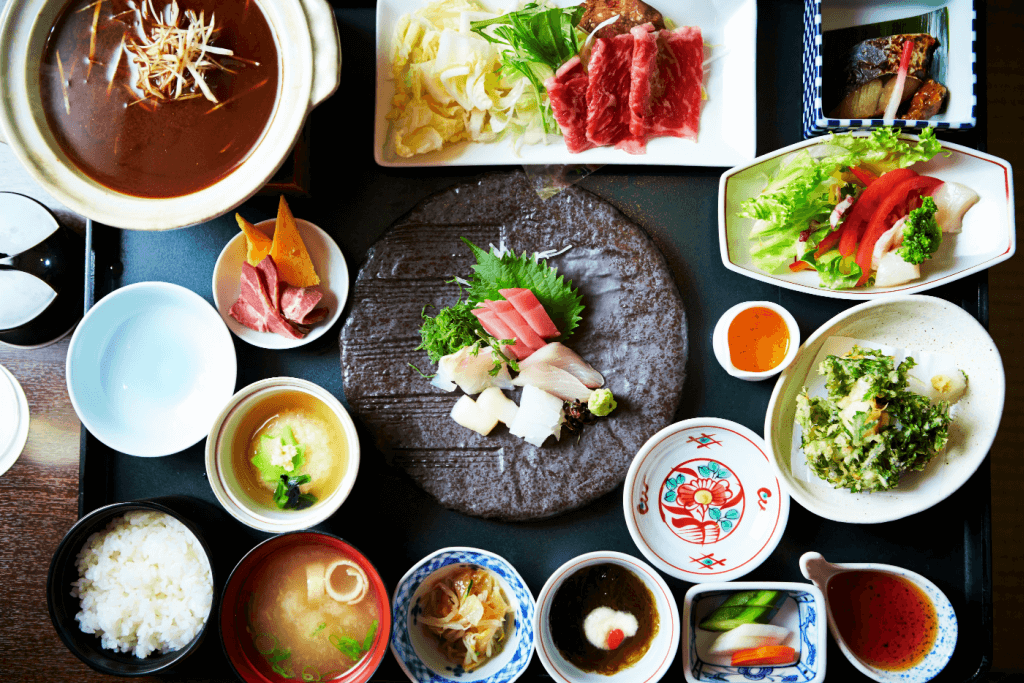Join the food adventure exploring kaiseki ryori, a culinary tradition embodying Japan’s rich cultural heritage. It’s rooted in the traditional tea ceremony and influenced by Zen Buddhism. It offers an artful and seasonal multi-course dining experience. The cuisine celebrates harmony, flavor, and beautiful presentation.
Table of Contents
ToggleWhere did kaiseki ryori come from?
The late 16th-century tea master Sen no Rikyū played a significant role in developing this cuisine.
Rikyū, a tea ceremony master, sought to elevate the practice by emphasizing simplicity, humility, and an appreciation of nature. He introduced a lighter meal known as kaiseki to complement the strong matcha tea served during the ceremony.
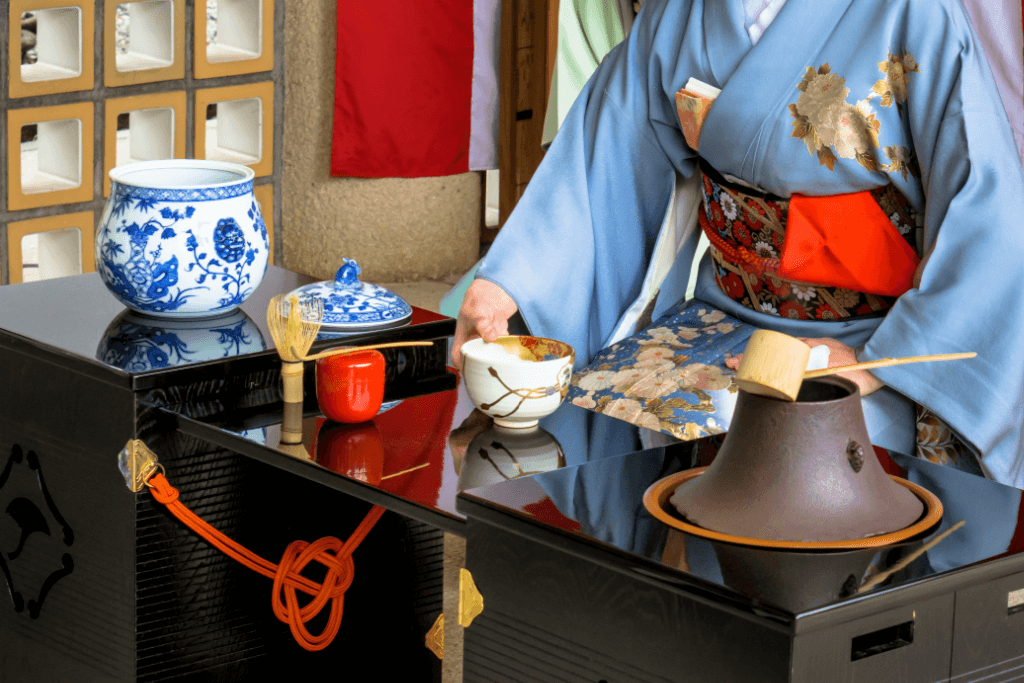
Additionally, Rikyū himself coined the term “kaiseki” (懐石), combining the characters “懐” (kai), meaning pocket, and “石” (seki), meaning stone. It symbolizes using hot stones to warm the monks’ pockets during colder seasons, reflecting the practical and humble nature of the early version of this meal.
In the Edo period (17th-19th century), kaiseki ryori gained popularity beyond its humble beginnings. The host served kaiseki ryori during traditional tea gatherings called “cha-no-yu.” Guests gathered to enjoy matcha prepared by the host. This cuisine’s elegance and artistic presentation expressed the spirit of hospitality and respect for nature.
What are the different kaiseki ryori courses?
Every chef carefully crafts kaiseki ryori, a multi-course traditional Japanese meal, to reflect the changing seasons and showcase the freshest ingredients. The traditional format of kaiseki ryori also follows the ichiju-sansai style, consisting of one soup and three dishes. However, modern variations may include more courses, especially in luxurious establishments.
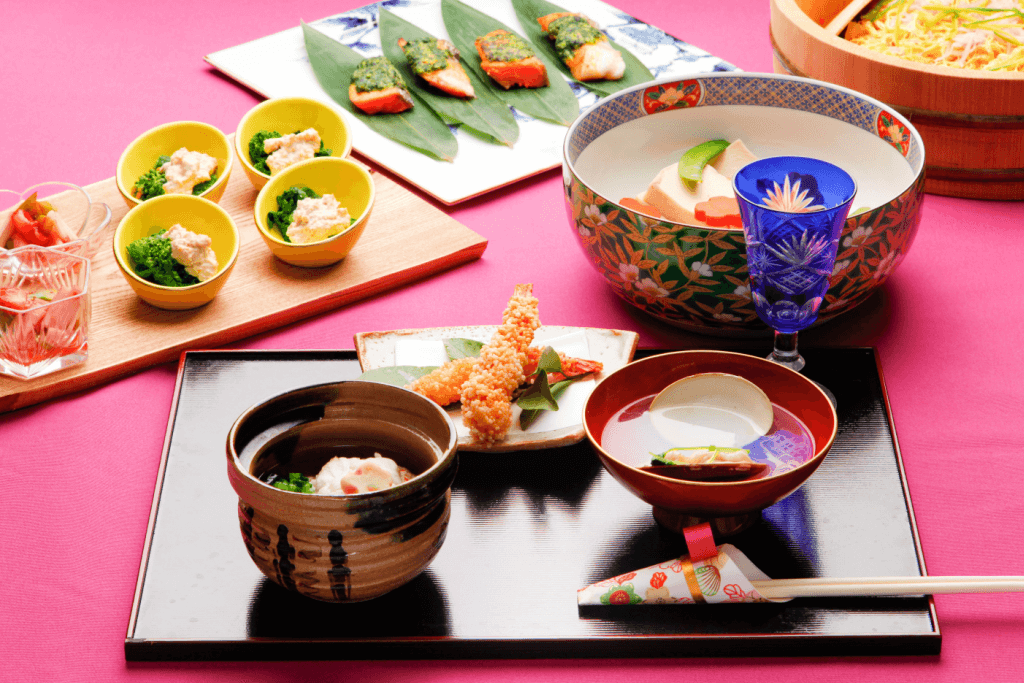
The meal commences with an oshiki or tray featuring rice, soup, and an amuse-bouche called mukozuke. Next comes the wanmori, a simmered dish served in a lacquer bowl, followed by yakimono, which typically includes grilled fish. Azukebachi offers delightful side dishes accompanying the rice, and shiizakana is a secondary course to satisfy guests’ appetites.
The suimono course cleanses the palate with a delicate clear soup. Next, hassun presents a visually pleasing arrangement of seasonal delicacies. Afterward, the meal ends with yutou-konowamono, hot water poured over toasted rice, and pickled vegetables. Finally, a sweet confection called omogashi is paired with koicha, a thick and rich matcha tea.
Are you looking to indulge in even more traditional Japanese food, especially before afternoon tea? Check out Sakuraco! Sakuraco delivers traditional Japanese snacks, teas, and sweets from local Japanese makers directly to your door.

What’s the difference between kaiseki ryori and kappo cuisine?
Though kaiseki ryori and kappo cuisine are celebrated Japanese dining styles, they differ significantly.
While kaiseki ryori follows a set course, kappo cuisine allows diners to order dishes directly from the chef at the counter. In contrast, kappo restaurants focus on the skillful art of live cooking, resulting in a more lively experience.
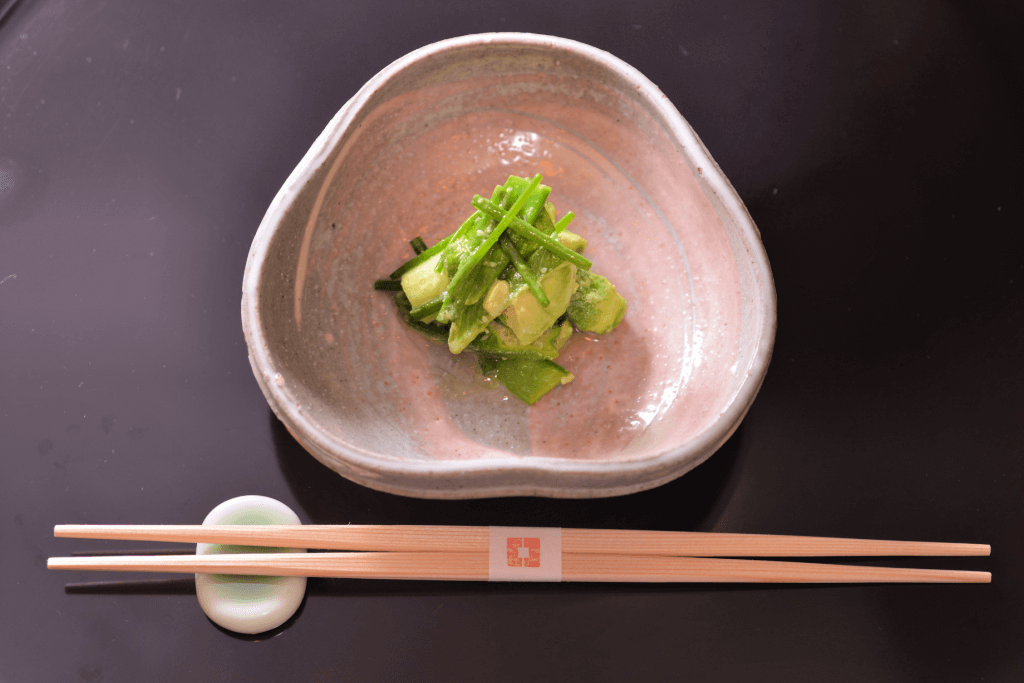
Kaiseki ryori highlights the seasonality of ingredients and harmonizes flavors. In contrast, kappo cuisine focuses on immediately enjoying dishes as they are prepared. On the other hand, kappo restaurants offer a wider variety of à la carte options. As a result, customers can choose dishes based on their preferences.
How is it related to the tea ceremony?
Kaiseki ryori’s connection to the Japanese tea ceremony, or cha-no-yu, has a deep history. Originally served as a light meal before the tea ceremony, kaiseki ryori complements the severe atmosphere of the ritual. The idea behind serving this meal before drinking tea is to enhance the appreciation of koicha, a concentrated and rich matcha.
Additionally, kaiseki ryori and the tea ceremony embrace the concept of wabi-sabi, valuing simplicity, imperfection, and the beauty of the fleeting moment. Using seasonal and locally sourced ingredients in kaiseki ryori reflects the spirit of shun, which aligns with the tea ceremony’s appreciation for the changing seasons.
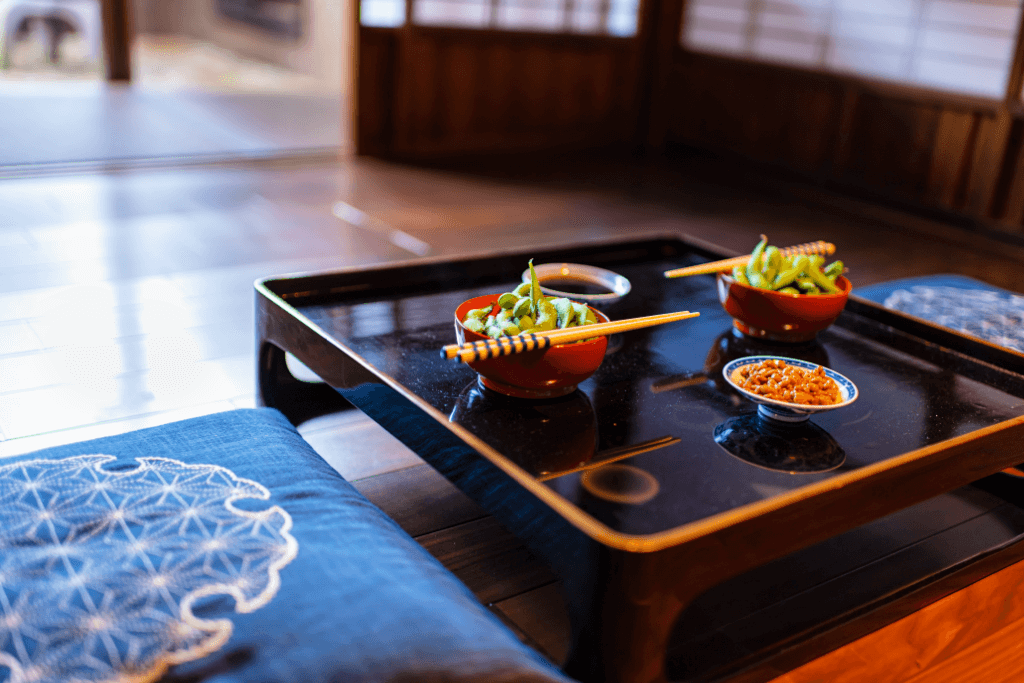
The essence of this cuisine lies in the carefully prepared dishes served at the appropriate time to ensure the guests savor the flavors thoroughly. Each dish is presented in a way that delights both the eyes and the palate and is considered the essence of Japanese cuisine. Moreover, it provides people a chance to practice their impeccable etiquette.
Kaiseki ryori embodies Japan’s cultural heritage, combining culinary artistry with a deep sense of tradition. Its historical roots in Zen practices and the tea ceremony illustrate how the essence of simplicity and seasonality remains at the heart of this exquisite dining experience.
From the carefully thought-out order of courses to the focus on visual presentation and harmony of flavors, kaiseki ryori is a celebration of nature’s bounty and life. As we savor the tastes of each season, we partake in an age-old tradition that continues to inspire and captivate food enthusiasts worldwide! Have you ever eaten kaiseki ryori? How was it? Let us know in the comments below!

